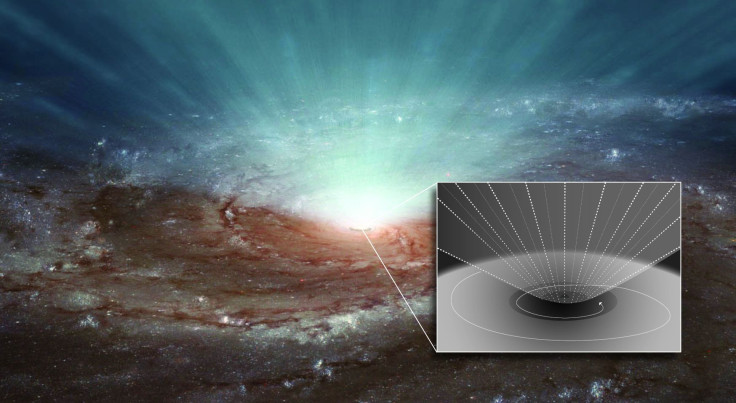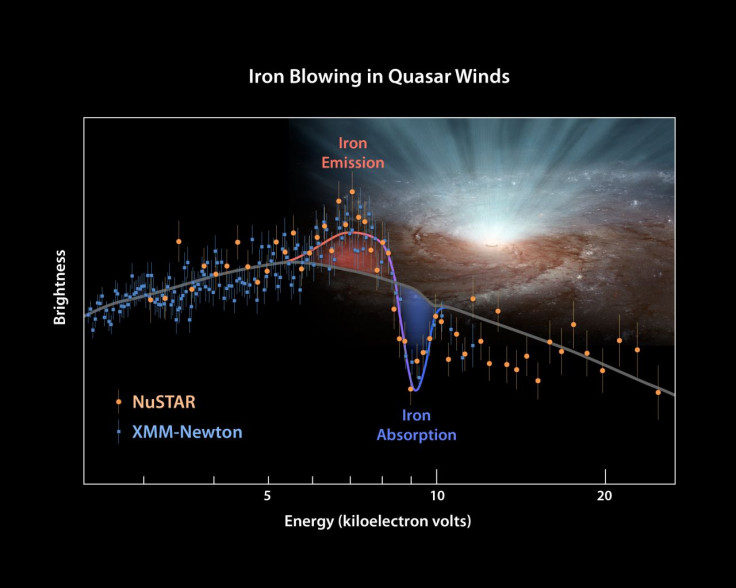Super-Powerful Supermassive Black Hole Winds, With The Force Of 1 Trillion Suns, Shape Galaxies

When you think of a black hole, you picture a space where no light or matter can escape, where something like a powerful galactic vacuum cleaner has sucked everything up. While that's generally true, black holes have some rather interesting properties that astronomers are just beginning to understand. Supermassive black holes are at the center of most large galaxies, including the Milky Way. A new study based on data collected by telescopes from NASA and the European Space Agency are helping to prove a theory that these objects have powerful winds that shape galactic growth.
NASA's Nuclear Spectroscopic Telescope Array (NuSTAR) and ESA's XMM-Newton telescope set their sights on PDS 456 and its supermassive black hole located 2 billion light-years away. The area around this black hole is active, with matter being drawn in by its gravitational pull while other matter is expelled by powerful winds. This two-way traffic is localized to the inner region of a galaxy, but researchers wanted to determine if a supermassive black hole's winds could affect the growth of a galaxy and the ability to produce new stars. PDS 456 is a quasar, "a class of galaxies that appear as a point source because the brightness produced by their stars is outshone by the emission from the activity of the central black hole," ESA explains. Quasars are incredibly bright objects across ultraviolet and optical wavelengths.
"We know black holes in the centers of galaxies can feed on matter, and this process can produce winds. This is thought to regulate the growth of the galaxies, Fiona Harrison, principal investigator of NuSTAR and an expert at the California Institute of Technology, said in a statement.

NuSTAR collected data from the higher end of the X-ray spectrum while XMM-Newton collected data from the lower end. Using this data, researchers were able to determine the size, general shape and speed of PDS 456's winds. As it turns out, these winds are fierce, packing the force of 1 trillion suns as they blow around the black hole in a spherical path.
"Now we know quasar winds significantly contribute to mass loss in a galaxy, driving out its supply of gas, which is fuel for star formation," lead author Emanuele Nardini, from Keele University, said in a statement. The central bulge of a galaxy feeds the supermassive black hole, and as it grows, its winds become more powerful. The wind will push matter outward, which limits star-formation activity.
The research was published in the journal Science.
© Copyright IBTimes 2024. All rights reserved.






















